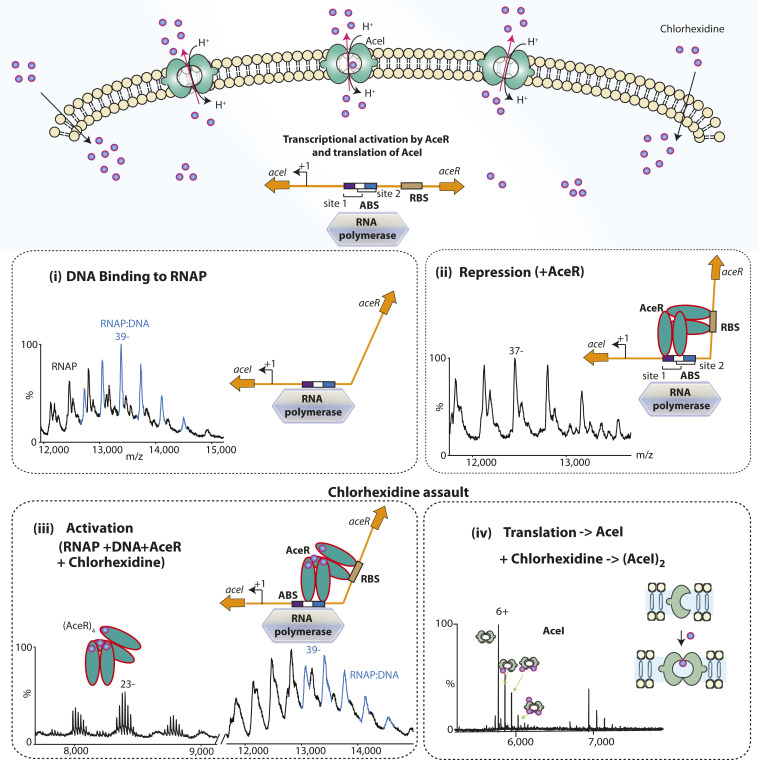Fig. 4.
Roles of AceR and chlorhexidine in controlling the expression of aceI gene. (Top) Schematic illustration of transcriptional activation of the aceI gene by AceR in response to external chlorhexidine stimuli. The resulting AceI protein effectively dimerizes to efflux chlorhexidine. (Bottom) The individual steps during transcriptional regulation of the aceI gene by AceR. (i) Mass spectra of intact RNAP with promoter DNA showing that RNAP binds to the promoter DNA in 1:1 ratio in the absence of regulatory protein AceR; (ii) mass spectra of RNAP with the promoter DNA in the presence of AceR showing that the complex between RNAP and DNA is disrupted; (iii) mass spectra of RNAP with DNA and AceR and in the presence of chlorhexidine showing the presence of a 1:1 complex between RNAP and DNA and a tetrameric population of AceR; (iv) further translation results in the AceI protein, which dimerizes on binding to chlorhexidine and at high pH to efflux the excess cellular chlorhexidine.

